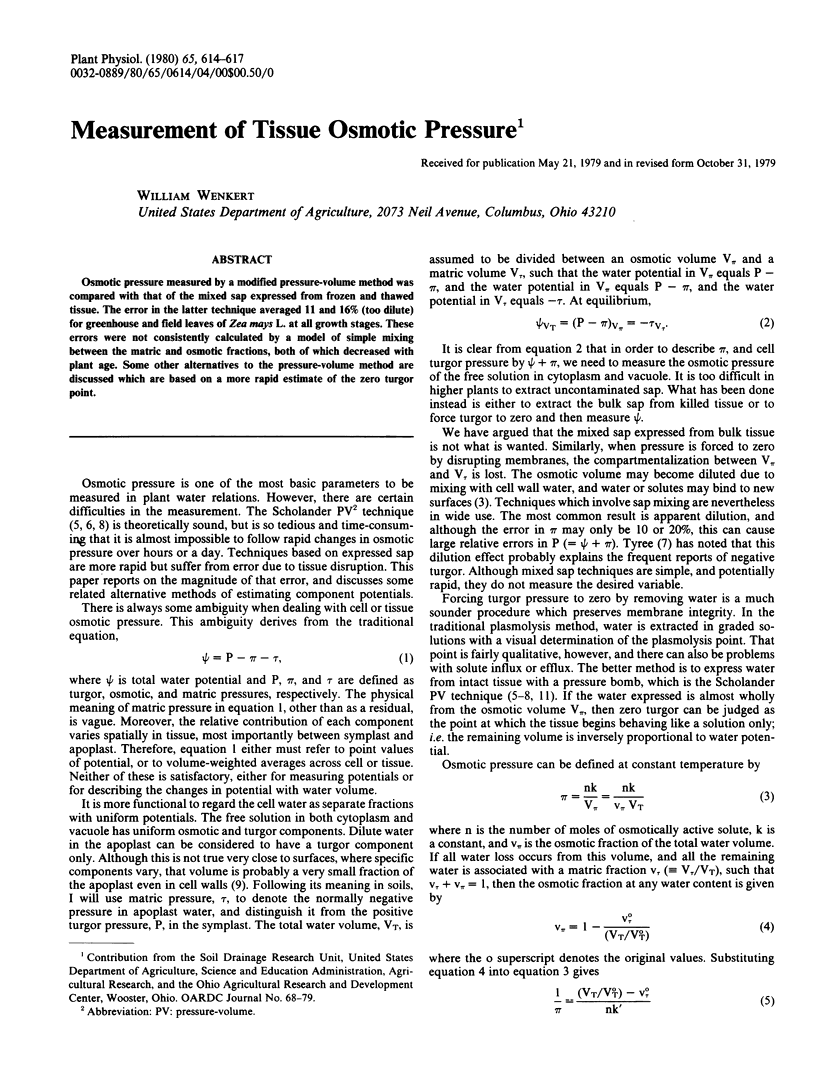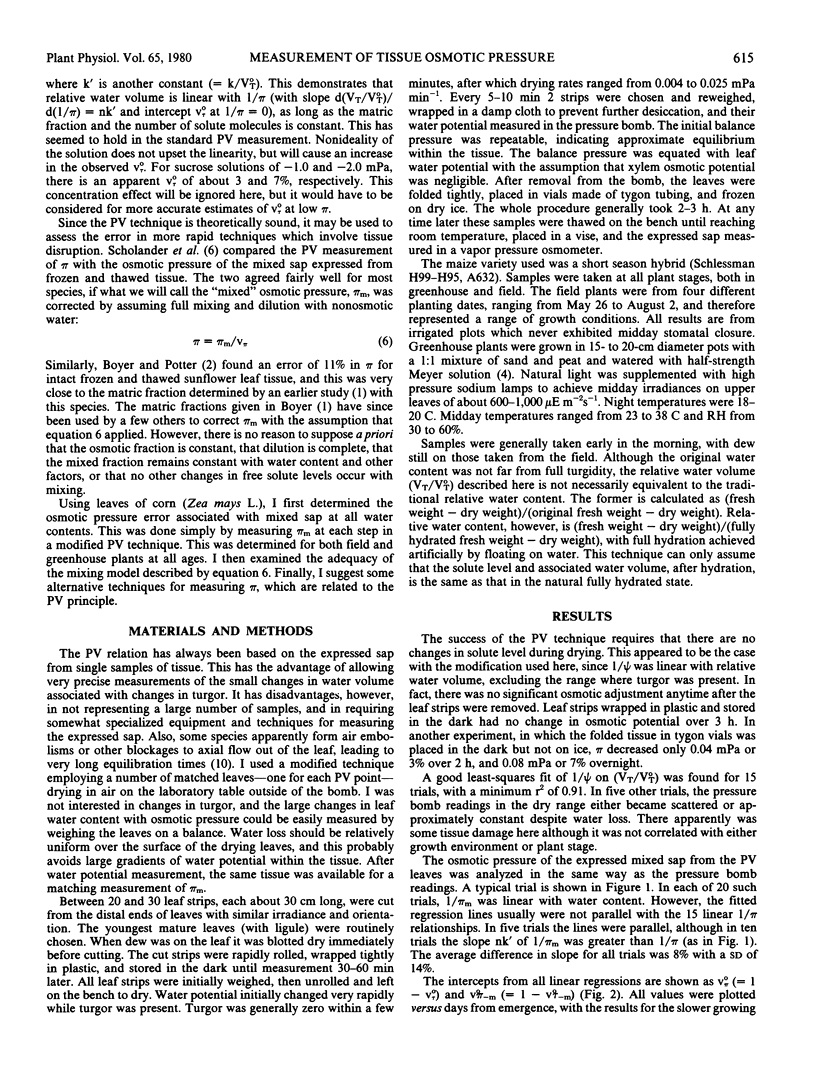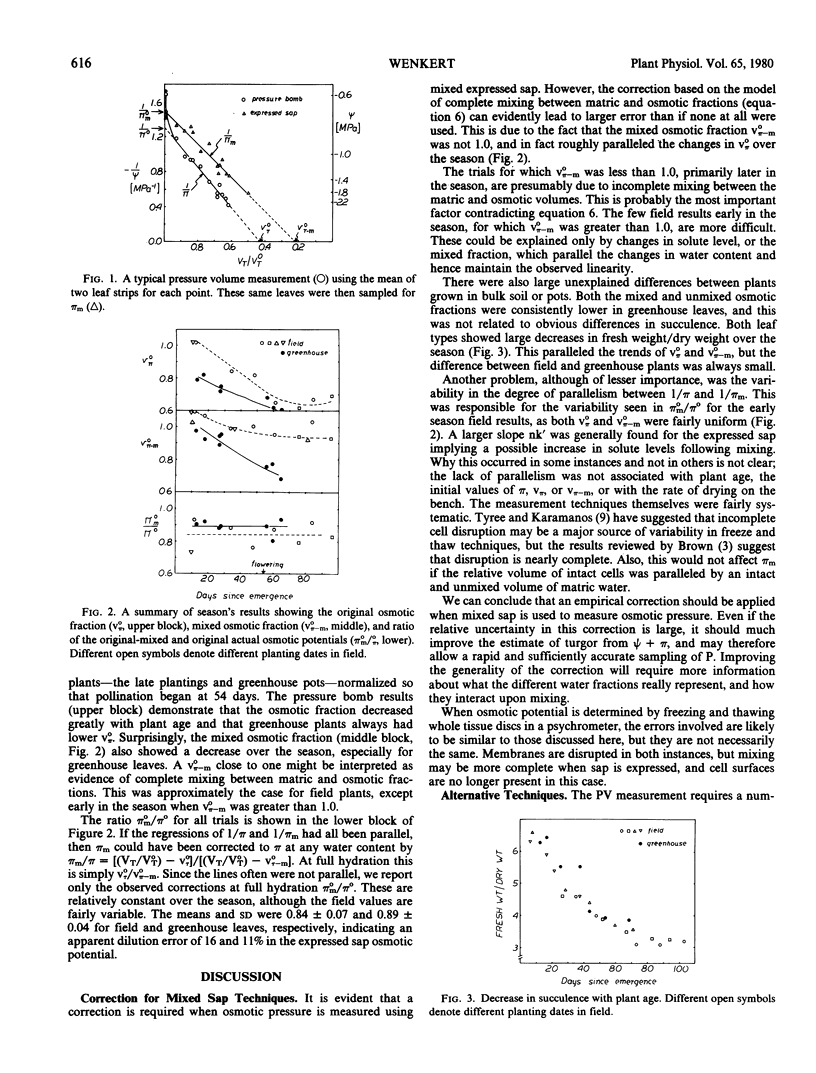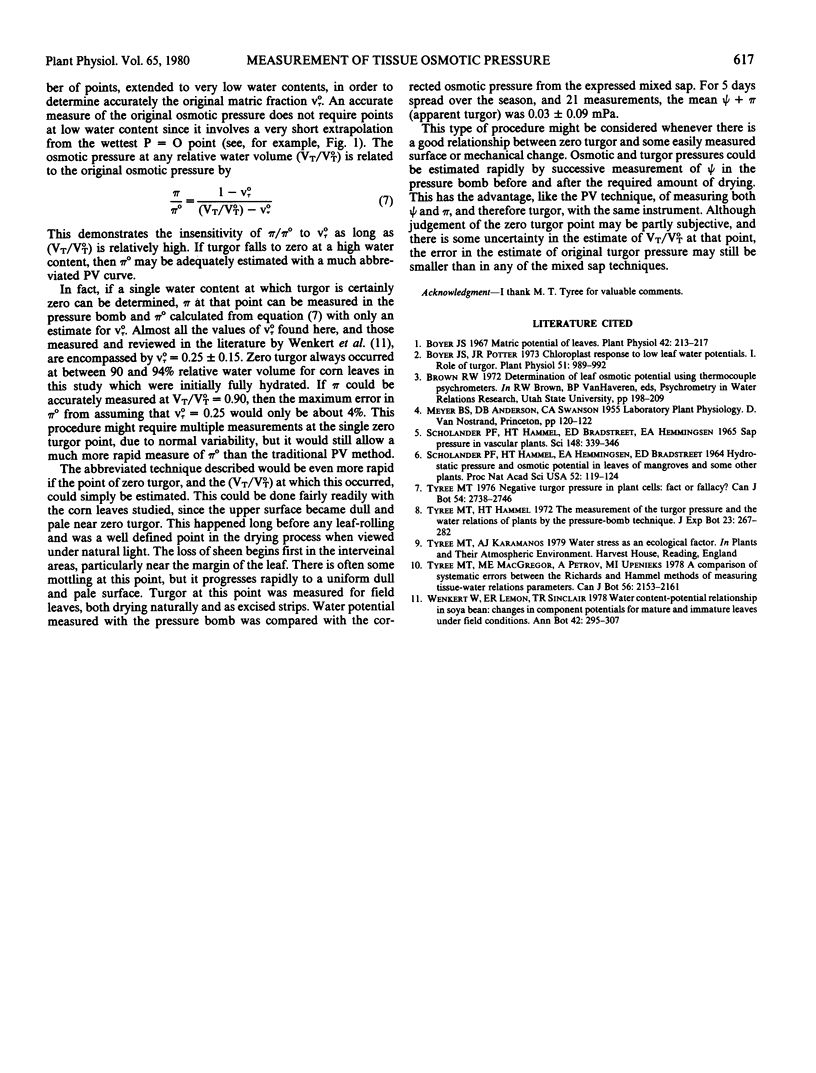Abstract
Osmotic pressure measured by a modified pressure-volume method was compared with that of the mixed sap expressed from frozen and thawed tissue. The error in the latter technique averaged 11 and 16% (too dilute) for greenhouse and field leaves of Zea mays L. at all growth stages. These errors were not consistently calculated by a model of simple mixing between the matric and osmotic fractions, both of which decreased with plant age. Some other alternatives to the pressure-volume method are discussed which are based on a more rapid estimate of the zero turgor point.
Full text
PDF



Selected References
These references are in PubMed. This may not be the complete list of references from this article.
- Boyer J. S. Matric potentials of leaves. Plant Physiol. 1967 Feb;42(2):213–217. doi: 10.1104/pp.42.2.213. [DOI] [PMC free article] [PubMed] [Google Scholar]
- Boyer J. S., Potter J. R. Chloroplast response to low leaf water potentials: I. Role of turgor. Plant Physiol. 1973 Jun;51(6):989–992. doi: 10.1104/pp.51.6.989. [DOI] [PMC free article] [PubMed] [Google Scholar]
- Scholander P. F., Bradstreet E. D., Hemmingsen E. A., Hammel H. T. Sap Pressure in Vascular Plants: Negative hydrostatic pressure can be measured in plants. Science. 1965 Apr 16;148(3668):339–346. doi: 10.1126/science.148.3668.339. [DOI] [PubMed] [Google Scholar]
- Scholander P. F., Hammel H. T., Hemmingsen E. A., Bradstreet E. D. HYDROSTATIC PRESSURE AND OSMOTIC POTENTIAL IN LEAVES OF MANGROVES AND SOME OTHER PLANTS. Proc Natl Acad Sci U S A. 1964 Jul;52(1):119–125. doi: 10.1073/pnas.52.1.119. [DOI] [PMC free article] [PubMed] [Google Scholar]


